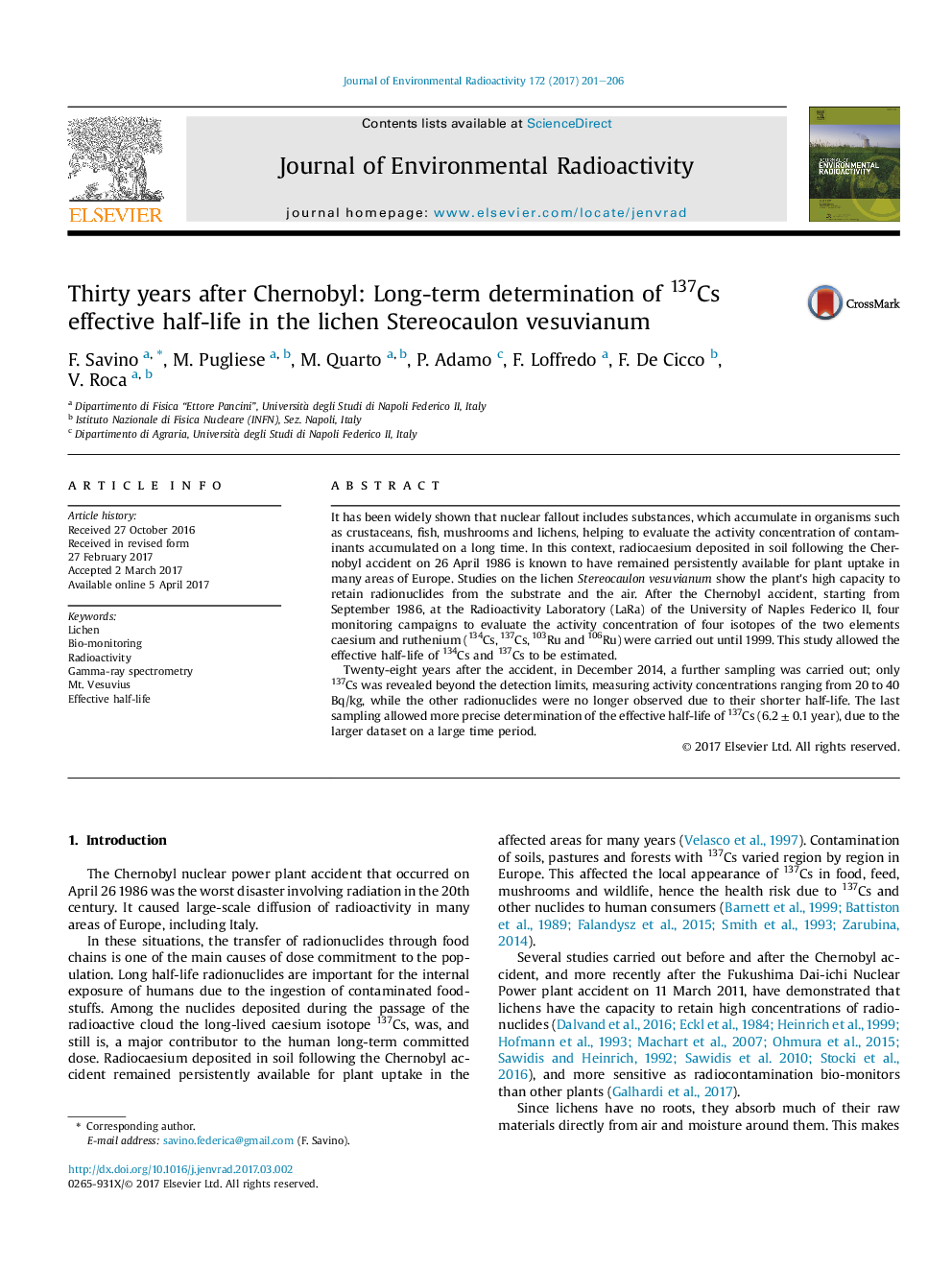| Article ID | Journal | Published Year | Pages | File Type |
|---|---|---|---|---|
| 5477544 | Journal of Environmental Radioactivity | 2017 | 6 Pages |
â¢Lichens have the capacity to retain high concentrations of radionuclides and metals.â¢A new survey was performed to monitor the activity concentration of caesium until to thirty years after Chernobyl disaster.â¢The effective half-time was measured which is in agreement with previous surveys.
It has been widely shown that nuclear fallout includes substances, which accumulate in organisms such as crustaceans, fish, mushrooms and lichens, helping to evaluate the activity concentration of contaminants accumulated on a long time. In this context, radiocaesium deposited in soil following the Chernobyl accident on 26 April 1986 is known to have remained persistently available for plant uptake in many areas of Europe. Studies on the lichen Stereocaulon vesuvianum show the plant's high capacity to retain radionuclides from the substrate and the air. After the Chernobyl accident, starting from September 1986, at the Radioactivity Laboratory (LaRa) of the University of Naples Federico II, four monitoring campaigns to evaluate the activity concentration of four isotopes of the two elements caesium and ruthenium (134Cs, 137Cs, 103Ru and 106Ru) were carried out until 1999. This study allowed the effective half-life of 134Cs and 137Cs to be estimated.Twenty-eight years after the accident, in December 2014, a further sampling was carried out; only 137Cs was revealed beyond the detection limits, measuring activity concentrations ranging from 20 to 40 Bq/kg, while the other radionuclides were no longer observed due to their shorter half-life. The last sampling allowed more precise determination of the effective half-life of 137Cs (6.2 ± 0.1 year), due to the larger dataset on a large time period.
